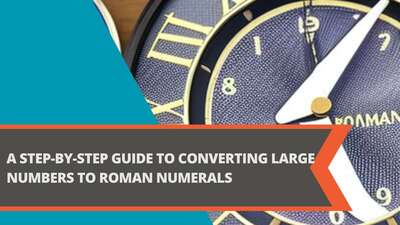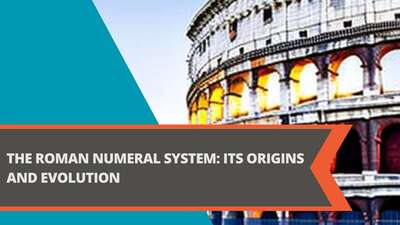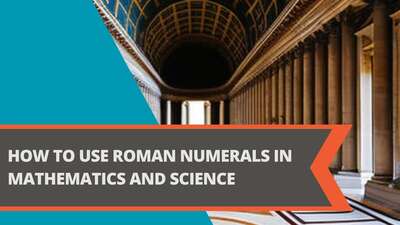The Importance of Number Conversion in Computer Science
- Definition of Number Conversion
- The Formula for Number Conversion
- Examples of Number Conversion
- Explanation of Number Conversion
- Question and Answer FAQ
- What is number conversion?
- Why is number conversion important in computer science?
- What are some examples of number conversion?
- How do I convert a number from one base to another?
- Conclusion
In computer science, number conversion is the process of converting a number from one numbering system to another. Number conversion is a fundamental concept in computer science, and it is essential for software developers, computer engineers, and other computer science professionals to understand. In this article, we will discuss the importance of number conversion in computer science, its formula, examples, and explanations, as well as some frequently asked questions about number conversion.
Definition of Number Conversion
Number conversion is the process of converting a number from one numbering system to another. In computer science, there are several numbering systems used to represent numbers, including decimal, binary, octal, and hexadecimal. The decimal system is the most commonly used numbering system in everyday life, while the binary system is commonly used in computing.
The decimal numbering system uses ten digits (0-9) to represent numbers, while the binary numbering system uses only two digits (0 and 1). The octal numbering system uses eight digits (0-7), and the hexadecimal numbering system uses sixteen digits (0-9 and A-F).
The Formula for Number Conversion
The formula for number conversion depends on the numbering system you are converting from and the numbering system you are converting to. Here are the formulas for converting between the most commonly used numbering systems:
- Decimal to Binary: Divide the decimal number by 2 and write down the remainder. Repeat this process until the quotient is 0. The binary number is the remainders read from bottom to top. For example, to convert the decimal number 10 to binary:
- Binary to Decimal: Multiply each binary digit by its corresponding power of 2 and add the results. For example, to convert the binary number 1010 to decimal:
- Decimal to Hexadecimal: Divide the decimal number by 16 and write down the remainder. If the remainder is greater than 9, replace it with the corresponding letter (A-F). Repeat this process until the quotient is 0. The hexadecimal number is the remainders read from bottom to top. For example, to convert the decimal number 255 to hexadecimal:
- Hexadecimal to Decimal: Multiply each hexadecimal digit by its corresponding power of 16 and add the results. For example, to convert the hexadecimal number FF to decimal:
10 / 2 = 5 remainder 0
5 / 2 = 2 remainder 1
2 / 2 = 1 remainder 0
1 / 2 = 0 remainder 1
Therefore, the binary equivalent of 10 is 1010.
1 * 2^3 + 0 * 2^2 + 1 * 2^1 + 0 * 2^0 = 8 + 0 + 2 + 0 = 10
Therefore, the decimal equivalent of 1010 is 10.
255 / 16 = 15 remainder 15 (which is F in hexadecimal)
15 / 16 = 0 remainder 15 (which is F in hexadecimal)
Therefore, the hexadecimal equivalent of 255 is FF.
F * 16^1 + F * 16^0 = 15 * 16^1 + 15 * 16^0 = 240 + 15 = 255
Therefore, the decimal equivalent of FF is 255.
Examples of Number Conversion
Here are some examples of number conversion:
- Decimal to Binary: Convert the decimal number 25 to binary.
- Binary to Decimal: Convert the binary number 111001 to decimal.
- Decimal to Hexadecimal: Convert the decimal number 4096 to hexadecimal.
- Hexadecimal to Decimal: Convert the hexadecimal number ABC to decimal.
25 / 2 = 12 remainder 1
12 / 2 = 6 remainder 0
6 / 2 = 3 remainder 0
3 / 2 = 1 remainder 1
1 / 2 = 0 remainder 1
Therefore, the binary equivalent of 25 is 11001.
1 * 2^5 + 1 * 2^4 + 1 * 2^3 + 0 * 2^2 + 0 * 2^1 + 1 * 2^0 = 32 + 16 + 8 + 1 = 57
Therefore, the decimal equivalent of 111001 is 57.
4096 / 16 = 256 remainder 0
256 / 16 = 16 remainder 0
16 / 16 = 1 remainder 0
1 / 16 = 0 remainder 1
Therefore, the hexadecimal equivalent of 4096 is 1000.
A * 16^2 + B * 16^1 + C * 16^0 = 10 * 16^2 + 11 * 16^1 + 12 * 16^0 = 2560 + 176 + 12 = 2748
Therefore, the decimal equivalent of ABC is 2748.
Explanation of Number Conversion
Number conversion is important in computer science because different numbering systems are used for different purposes. For example, the binary numbering system is used in computing because it is easy for computers to represent two states (on/off, true/false) using two digits (0/1). The hexadecimal numbering system is used in computing because it is a more compact way to represent large binary numbers.
Converting numbers between different numbering systems is also important in computer science because it allows us to work with numbers in different ways. For example, if we have a binary number that represents a color (e.g., 11001101), we may want to convert it to hexadecimal so that it is easier to read and work with (e.g., AD). Similarly, if we have a decimal number that represents an IP address (e.g., 192.168.0.1), we may want to convert it to binary so that we can perform bitwise operations on it.
Overall, number conversion is an essential skill for anyone working in computer science, whether you are a software developer, network engineer, or cybersecurity analyst.
Question and Answer FAQ
What is number conversion?
Number conversion is the process of converting a number from one numbering system to another. In computer science, the most commonly used numbering systems are decimal (base 10), binary (base 2), and hexadecimal (base 16).
Why is number conversion important in computer science?
Number conversion is important in computer science because different numbering systems are used for different purposes. For example, binary is used to represent two states (on/off, true/false) using two digits (0/1), while hexadecimal is used to represent large binary numbers in a more compact form. Converting numbers between different numbering systems allows us to work with numbers in different ways, which is essential in many areas of computer science.
What are some examples of number conversion?
Some examples of number conversion include converting a decimal number to binary or hexadecimal, converting a binary number to decimal or hexadecimal, and converting a hexadecimal number to decimal or binary. See the examples section above for more specific examples.
How do I convert a number from one base to another?
The process of converting a number from one base to another depends on the specific bases involved. However, in general, you can use the following formula to convert a number from base X to base Y:
(X^n-1 * a_n-1) + (X^n-2 * a_n-2) + ... + (X^1 * a_1) + (X^0 * a_0) = Y^m-1 * b_m-1 + Y^m-2 * b_m-2 + ... + Y^1 * b_1 + Y^0 * b_0
Here, X is the starting base, Y is the target base, n is the number of digits in the starting number, m is the number of digits in the target number, a_i is the i-th digit in the starting number (counting from the right), and b_i is the i-th digit in the target number (also counting from the right).
Conclusion
Number conversion is an essential skill for anyone working in computer science. Whether you are working with binary numbers to perform bitwise operations or converting IP addresses from decimal to binary, understanding how to convert numbers between different numbering systems is key to success in many areas of computer science. By using the formulas and examples provided in this article, you can become proficient in number conversion and take your skills to the next level.







